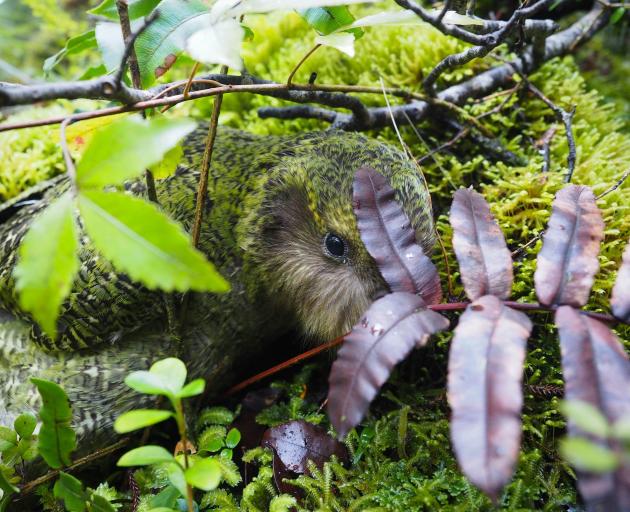
Half the southern birds have either escaped from their enclosure or have some fascination with the fence keeping them in.
In July and September this year, the Department of Conversation (Doc) shipped 10 kākāpō from southern islands to the Sanctuary Mountain Maungatautari, south of Hamilton, which is enclosed within a 47km-long pest-proof fence.
Doc said yesterday the allure of the fence has proven too strong for the curious and flightless parrots, three finding a way over it in the past two months.
"One kākāpō, Motupōhue, who was part of the first cohort transferred in July, found his way out twice in quick succession," Doc kākāpō operations manager Deidre Vercoe said.
Motupohue was out for about a day both times before being found.
Four-year-old Manaaki was safely returned inside the fence last week after being found in a dense patch of blackberry bushes.
Four-year-old Tautahi got out last month, heading towards a farm block on the southeast corner of the mountain.
Motupōhue was relocated back to an island last week, along with his mates Manawanui and Kanawera, who have not breached the fence but created a high monitoring workload by spending a lot of time near it.
This has dropped bird numbers to seven as Doc looks to develop a less labour-intensive monitoring solution.
The trial was reinforcing the need to never underestimate a kākāpō, she said.
Kākāpō were excellent climbers that could use their wings to "parachute" from treetops.
The average canopy height at the Maungatautari is higher than in the southern islands, meaning greater parachuting distances.
Having kākāpō in a fenced sanctuary was a first.
New habitat was needed for the kākāpō as southern predator-free islands had reached capacity.
The population was just under 250 birds.











